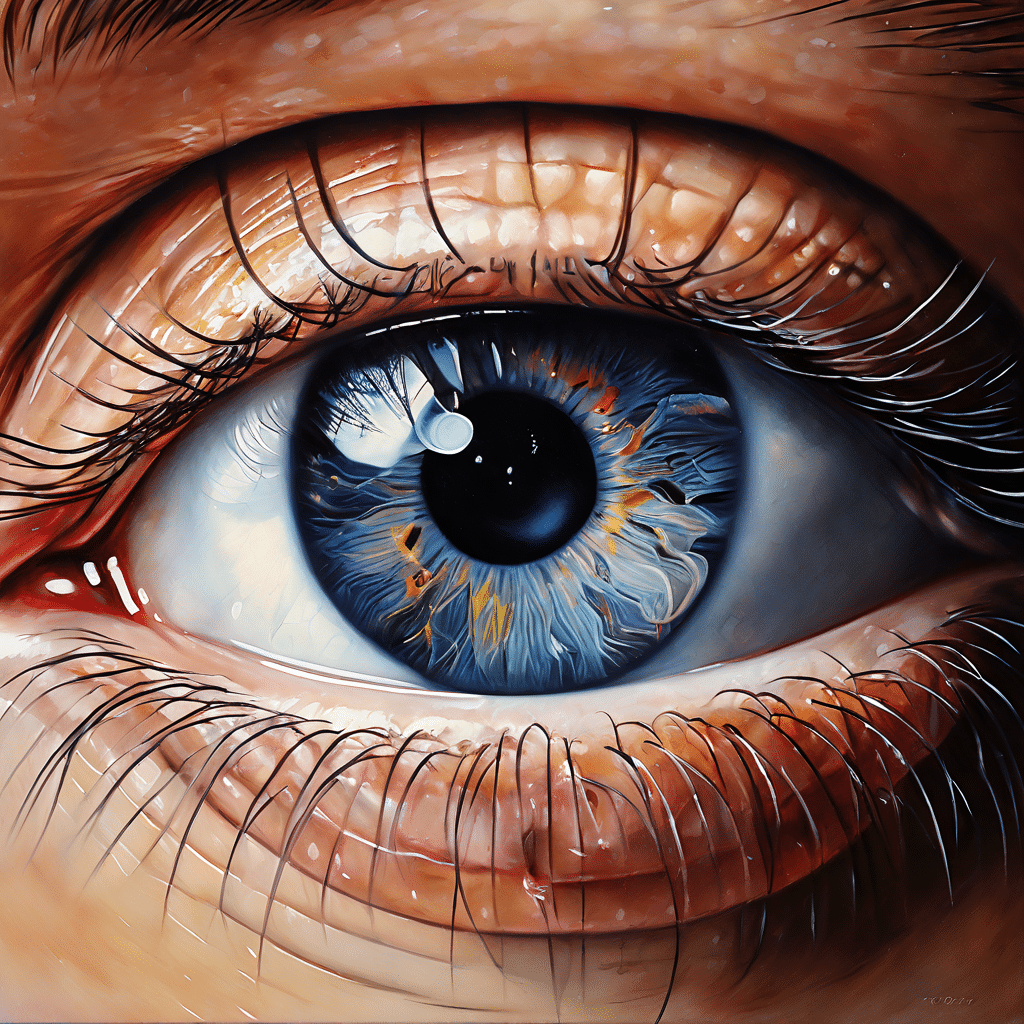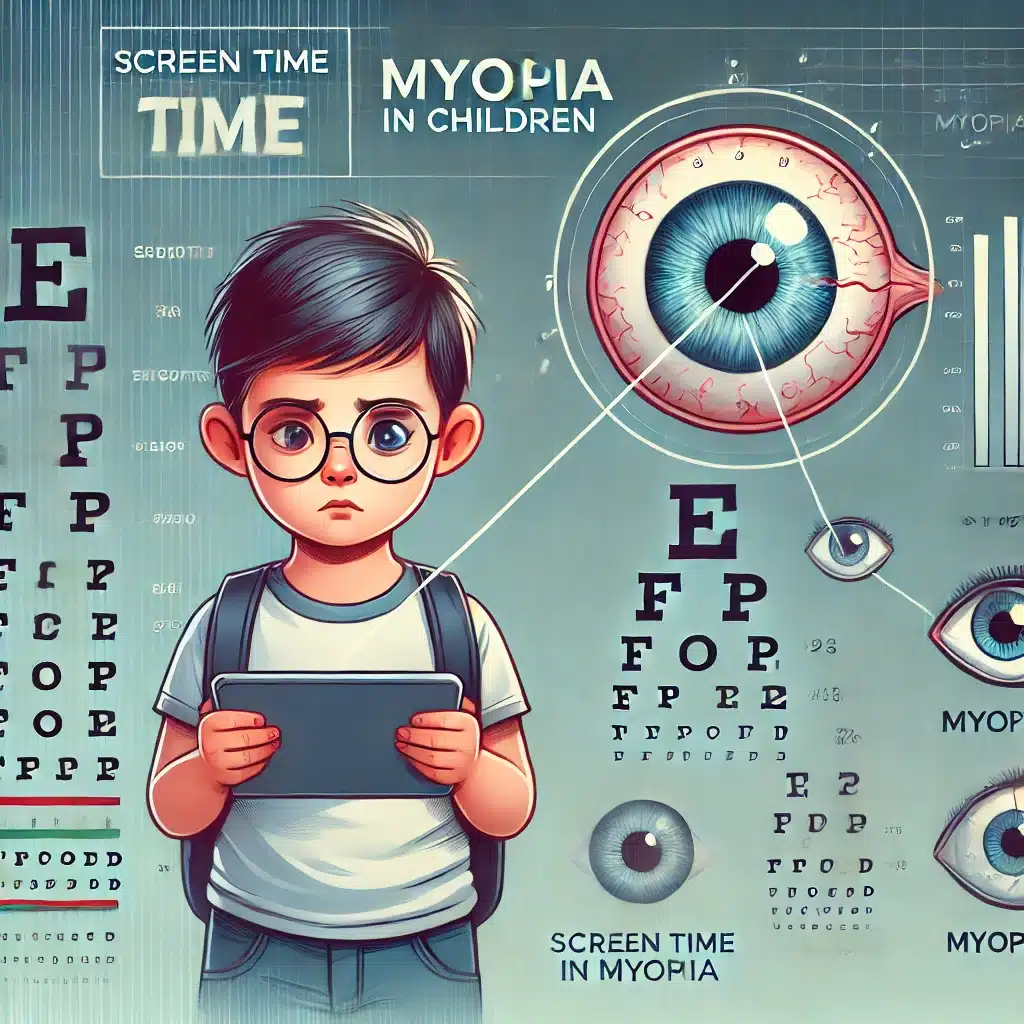TLDR: High screen time exposure is significantly associated with an increased risk of myopia in children and adolescents, with computer use showing the strongest correlation, followed by television, while smartphone use shows no significant association.
Highlights:
- Significant Link: The meta-analysis revealed a statistically significant correlation between high screen time exposure and increased risk of myopia in children and adolescents.
- Devices: Screen time from computers showed the strongest association with myopia, whereas smartphones did not show a significant correlation.
- Analysis: High-quality studies and those conducted in East Asia and South Asia showed stronger associations between screen time and myopia.
- Robustness: Despite some publication bias, the overall findings remained robust after adjustments, confirming the significant relationship.
- Implications: These findings suggest the need for strategies to limit screen time, especially from computers, to help prevent myopia in children and adolescents.
Source: BMC Public Health (2024)
The Prevalence of Myopia
Myopia, or near-sightedness, has seen a significant rise in prevalence over the past few decades, particularly among children and adolescents.
Estimates suggest that nearly 30% of the global population is affected by myopia, with projections indicating that this number could rise to 50% by 2050.
The condition is particularly common in East Asia, where countries like China, Japan, and South Korea report prevalence rates exceeding 80% among school-aged children.
Signs & Symptoms of Myopia
Common Signs
- Blurred vision when looking at distant objects
- Squinting or partially closing the eyelids to see clearly
- Headaches due to eye strain
- Difficulty seeing while driving, especially at night (night myopia)
Symptoms in Children
- Frequent eye rubbing
- Excessive blinking
- Holding reading materials very close to the face
- Complaints of not being able to see the board in school
Causes of Myopia
- Genetics: A strong genetic component exists, with children having myopic parents being at higher risk.
- Near-Work Activities: Extended periods of close-up tasks, such as reading and using digital devices.
- Limited Outdoor Time: Insufficient exposure to natural light has been linked to myopia development.
Major Findings: Myopia vs. Screen Time in Children & Adolescents (2024)

The systematic review and meta-analysis examined the association between screen time exposure and myopia (near-sightedness) in children and adolescents, revealing several significant findings.
Overall Link Between Screen Time and Myopia
Statistically Significant Correlation
- High screen time exposure is significantly associated with an increased risk of myopia.
- Pooled odds ratios (ORs) indicate a higher likelihood of myopia with increased screen time, seen both in cross-sectional and cohort studies.
Study Design
Cross-Sectional Studies
- The pooled OR for high versus low screen time exposure was 2.24 (95% CI: 1.47–3.42).
- This indicates that children with high screen time had more than double the odds of having myopia compared to those with low screen time.
Cohort Studies
- The pooled OR for high versus low screen time exposure was 2.39 (95% CI: 2.07–2.76).
- This confirms that children with higher screen time are over twice as likely to develop myopia.
Exposure Type
Continuous Exposure
- A significant association was found between continuous exposure to screen time (per 1 hour per day increase) and myopia in cohort studies.
- The pooled OR was 1.07 (95% CI: 1.01–1.13), suggesting a 7% increase in the odds of myopia for each additional hour of screen time per day.
Screen Device Type
Computers
- Screen time from computers showed the strongest association with myopia.
- Categorical exposure to computer screen time had a pooled OR of 8.19 (95% CI: 4.78–14.04).
- Continuous exposure to computer screen time showed a pooled OR of 1.22 (95% CI: 1.10–1.35) per hour per day.
Televisions (TV)
- High versus low exposure to television screen time was significantly associated with myopia.
- The pooled OR was 1.46 (95% CI: 1.02–2.10).
Smartphones
- No significant association was found between smartphone screen time and myopia.
- The pooled OR for categorical exposure was 1.94 (95% CI: 0.70–5.39).
Geographic Region
East Asia
- A significant association was found in studies conducted in East Asia, with a pooled OR of 1.62 (95% CI: 1.07–2.45).
South Asia
- Studies from South Asia also showed a strong association, with a pooled OR of 8.19 (95% CI: 4.78–14.04).
Europe & America
- No significant association was observed in studies conducted in Europe and America, with a pooled OR of 1.59 (95% CI: 0.85–2.97).
Study Quality
High-Quality Studies
- Significant associations were observed in high-quality studies, with a pooled OR of 2.94 (95% CI: 1.50–5.76).
Moderate-Quality Studies
- No significant association was found in moderate-quality studies, with a pooled OR of 1.59 (95% CI: 0.85–2.97).
Publication Bias & Sensitivity Analysis
Publication Bias
- Publication bias was detected in the high versus low screen time and myopia group.
- After adjusting for publication bias using the trim and fill method, the pooled OR was 1.34 (95% CI: 1.18–1.52).
Sensitivity Analysis
- Sensitivity analysis using the leave-one-out method confirmed the robustness of the overall findings in the high versus low screen time group, though not in the continuous exposure group.
Meta-Analysis: Myopia & Screen Time in Pediatrics (2024)

Aim: The aim of this study was to systematically review epidemiological evidence on the associations between screen time exposure and myopia in children and adolescents.
Sample: The study analyzed data from 19 eligible studies, which included a total of 102,360 participants. The sample comprised 91,282 participants from 15 cross-sectional studies and 11,078 participants from 4 cohort studies.
Methods:
- Data Collection: The study conducted a comprehensive search of three online databases: PubMed, Embase, and Web of Science, for relevant epidemiological studies published before June 1, 2023.
- Risk of Bias Assessment: The Newcastle Ottawa Scale (NOS) checklist was used to assess the risk of bias in the included studies.
- Data Analysis: Summary odds ratios (ORs) and 95% confidence intervals (CIs) were calculated using random or fixed-effect models based on the type of screen time exposure (categorical or continuous). Subgroup analyses were performed by screen device type, study quality, geographic region, and research period.
Limitations:
- Study Design: The majority of included studies were cross-sectional, which can identify associations but not causation.
- Heterogeneity: High heterogeneity was found among the included cross-sectional studies, possibly due to differences in study design, population characteristics, and exposure levels.
- Self-Reported Data: Most screen time data were self-reported, which can introduce recall bias.
- Confounding Factors: Not all studies adjusted for important confounding factors such as outdoor activities, which can influence the results.
- Publication Bias: Publication bias was detected, indicating that studies showing significant results may be more likely to be published.
How Could Screen Time Cause Myopia in Some People? (Possible Mechanisms)

Increased Near-Work: Prolonged screen time involves extensive near work, which is a known risk factor for myopia. This constant close-up focus can lead to eye strain and elongation of the eyeball, contributing to myopia.
Reduced Outdoor Exposure: Time spent on screens often replaces outdoor activities. Exposure to natural light during outdoor play is protective against myopia. Less time outdoors can decrease the beneficial effects of natural light on eye development.
Accommodation Stress: Continuous focusing on screens can lead to accommodation stress, where the eye’s focusing mechanism is overworked. This stress can contribute to the development and progression of myopia.
Blue Light Exposure: Digital screens emit blue light, which may have adverse effects on eye health. While the exact relationship between blue light and myopia is still under investigation, it is thought that excessive blue light exposure might contribute to eye strain and fatigue.
Potential Application: Myopia Prevention Strategies
The findings from this systematic review and meta-analysis offer several practical applications and takeaways for preventing or reducing the risk of myopia in children and adolescents.
- Develop & Follow Screen Time Guidelines: Adhere to updated public health recommendations on appropriate screen time for children and adolescents.
- Raise Awareness: Launch and participate in campaigns to educate about the impact of screen time on eye health.
- Incorporate Regular Breaks: Implement the 20-20-20 rule: every 20 minutes, take a 20-second break to look at something 20 feet away.
- Encourage Outdoor Activities: Promote and ensure adequate outdoor activities during the day to benefit from natural light.
- Limit Screen Time: Set and enforce limits on children’s screen time based on public health guidelines.
- Monitor Device Use: Use tools and applications to track and limit screen time on digital devices.
- Routine Eye Exams: Ensure regular eye exams for children, with discussions about their screen time habits.
- Design Ergonomic Devices: Choose or advocate for devices designed to minimize eye strain, with features like adjustable brightness, blue light filters, and break reminders.
Correlation vs. Causation: Screen Time & Myopia
The findings of the study primarily indicate a correlation between screen time exposure and myopia in children and adolescents.
While the study provides strong evidence of an association, it does not establish a direct causal relationship.
The study demonstrated a statistically significant association between high screen time and myopia.
For instance, high screen time exposure had pooled ORs of 2.24 for cross-sectional studies and 2.39 for cohort studies, indicating a higher likelihood of myopia among children with more screen time.
There are many other factors that could influence the development of myopia, such as genetics, overall time spent on near-work activities, and lack of outdoor activities.
Conclusion: Screen Time & Myopia in Pediatrics
This systematic review and meta-analysis aimed to investigate the association between screen time exposure and myopia in children and adolescents.
Analyzing data from 19 studies involving over 100,000 participants, the study found a significant correlation between higher screen time and an increased risk of myopia.
The association was particularly strong for computer use, with less clear links for smartphone use.
Despite the robust correlation found, the study’s reliance on cross-sectional data and self-reported screen time limits the ability to establish causation.
High heterogeneity and potential publication bias further complicate the interpretation of the results.
Nonetheless, the findings underscore the importance of managing screen time and promoting outdoor activities to mitigate myopia risk in young populations.
Future research should aim to use more rigorous longitudinal designs and better control for confounding factors to clarify the causal relationship between screen time and myopia.
References
- Study: The association between screen time exposure and myopia in children and adolescents: a meta-analysis (2024)
- Authors: Zhiqiang Zong et al.







